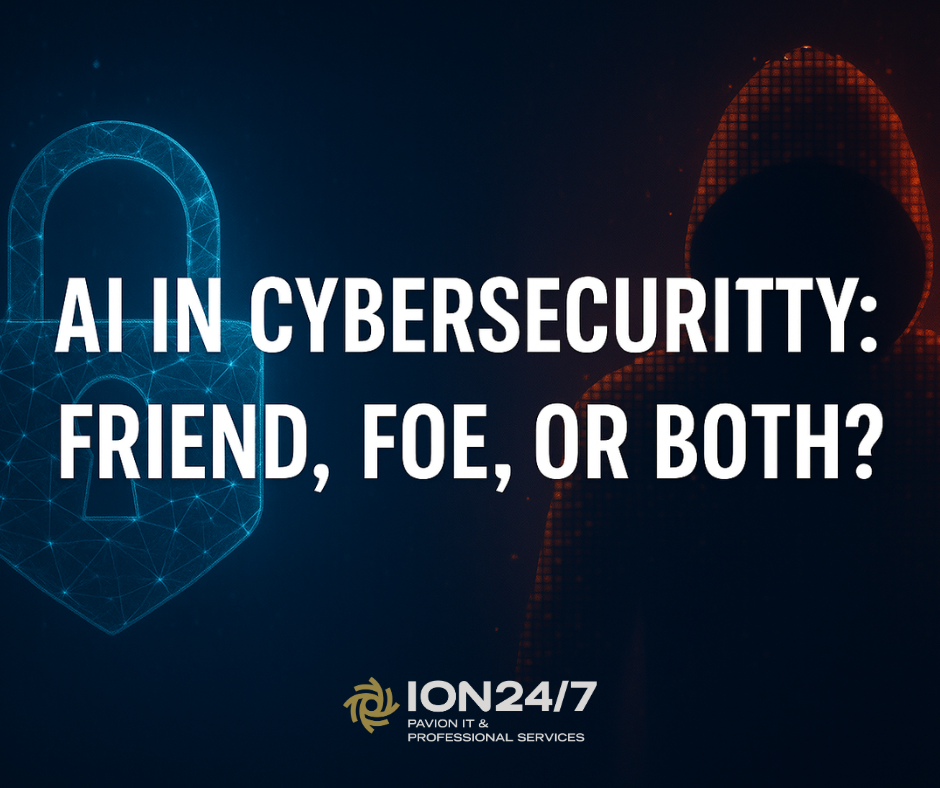The Double-Edged Sword of AI in Cybersecurity
Artificial intelligence is rapidly transforming cybersecurity. What was once a futuristic concept has become a daily reality. AI tools now help organizations detect anomalies, automate responses, and anticipate emerging threats. However, this same technology is also empowering cybercriminals. As both defenders and attackers embrace AI, the question becomes not whether it is a friend or foe, but how organizations can balance its potential with its risks.
AI as a Cybersecurity Ally
AI’s strength lies in its ability to process and analyze enormous datasets faster than any human could. This makes it invaluable for modern threat detection. AI-powered systems can identify patterns in network traffic, detect subtle deviations in user behavior, and even predict breaches before they happen.
By automating tasks like malware detection, patch management, and incident response, AI helps security teams act faster and smarter. It turns reactive security into proactive defense. For overstretched IT departments, AI’s automation capabilities can be a game changer.
When AI Becomes the Adversary
Unfortunately, bad actors are just as innovative. Cybercriminals are leveraging AI to scale attacks, craft convincing phishing campaigns, and evade traditional detection methods. Deepfake technology can impersonate executives. Machine learning can automate password cracking or design polymorphic malware that changes its behavior to avoid detection.
The result is a cybersecurity arms race where AI is on both sides of the battlefield.
Striking the Balance: Responsible AI Security
To thrive in this new era, organizations must adopt a dual mindset. They should leverage AI for defense while defending against AI-enabled threats. That means establishing governance frameworks for ethical AI use, maintaining human oversight, and training employees to recognize AI-generated content.
Equally important is maintaining transparency and compliance. As regulations around data and AI expand globally, businesses must ensure that their AI systems are auditable and explainable.
The Future of Cyber Defense
AI will never replace human intuition; it will enhance it. By pairing advanced analytics with human expertise, organizations can stay ahead of cyber adversaries and future proof their defenses.
In a world where AI can be both shield and sword, the real differentiator is how intelligently and responsibly you use it.
Frequently Asked Questions (FAQs)
1. How is AI used in cybersecurity today?
AI supports cybersecurity by detecting anomalies, analyzing large datasets for threats, and automating responses to attacks faster than human analysts could.
2. What are the risks of AI in cybersecurity?
Cybercriminals can use AI to automate attacks, create deepfakes, and bypass traditional security systems, making defense strategies more complex.
3. Can AI replace human cybersecurity experts?
No. AI enhances detection and response but still requires human oversight, judgment, and ethical control to ensure decisions are accurate and responsible.
4. How can businesses prepare for AI-driven threats?
Implement ethical AI frameworks, maintain human review in decision making, and invest in employee training to recognize AI-powered attacks.

